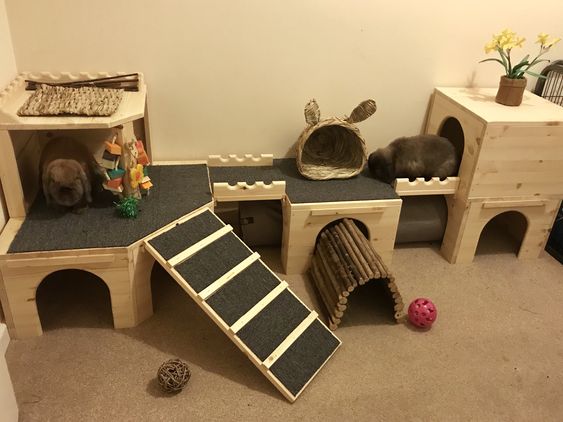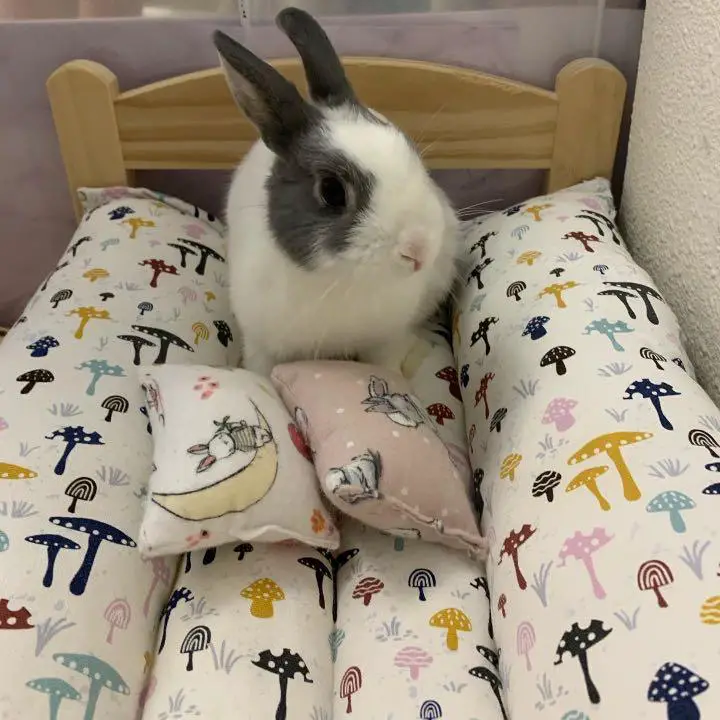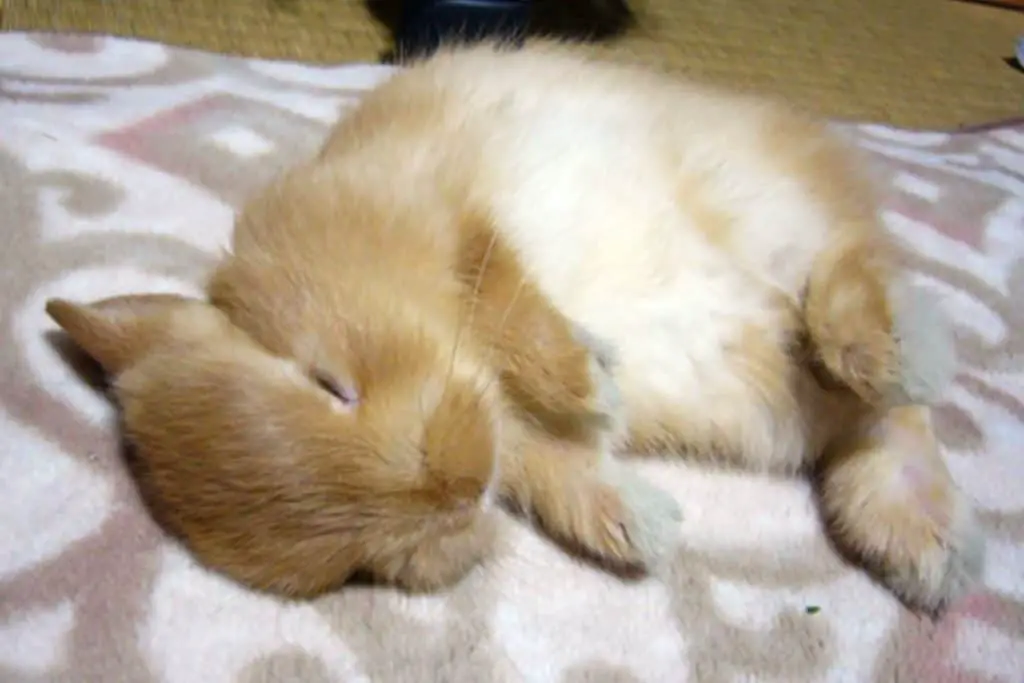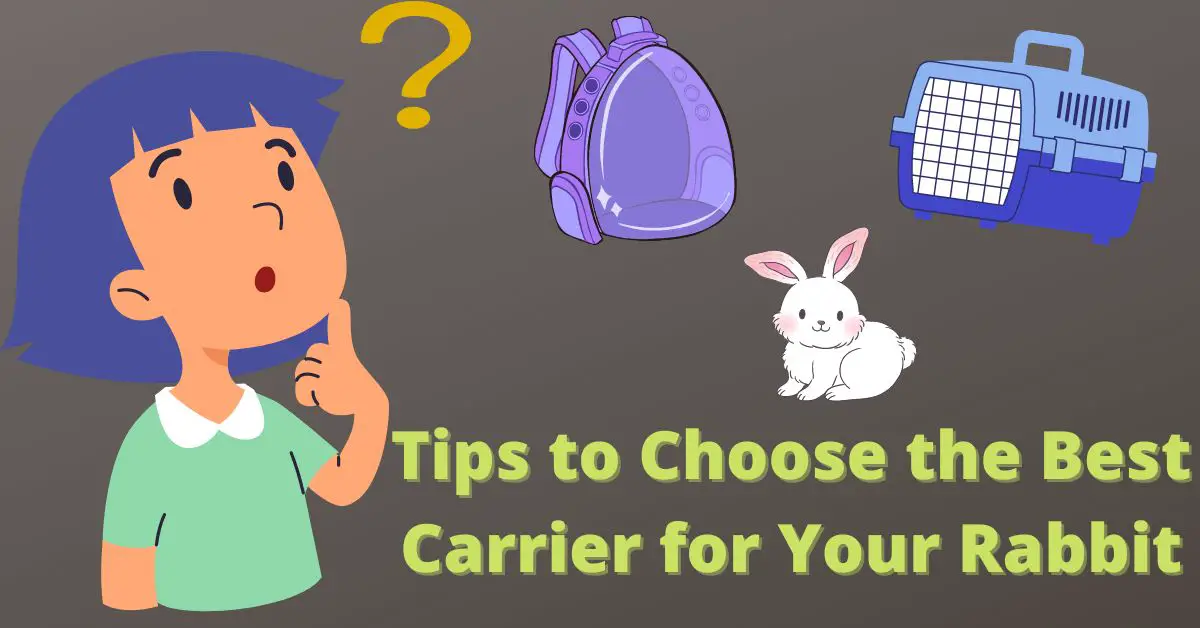Rabbit Guide Supply Checklist

Did you bring home a new pet rabbit recently?
If yes, you are about to step into a new life with a great companion.
It feels awesome to bring a new young cute bun home. Rabbits are delicate furry angels who make friends quickly with the inmates of the house.
But, are you ready for a pet rabbit?
If you do not make some early preparations, it can lead to trouble in the house. You may end up leading an unhappy life with your new pet.
Before you welcome the new pal into the family, read this article carefully. With over 15 years of life with indoor bunnies, we have helped several small pet owners to take care of these cuties at home.
This is an in-depth guide to bunny supplies for caring, diet, and so much more. After reading this post, you will get to know about the things you need to keep a rabbit comfortable, safe, and healthy.
Rabbit Proofing: Prepare Your Home for the New Small Pet
We can guide you through the process. It all starts with bunny-proofing the place where you want to keep the newest inmate of the house.
Even before you bring a new friend, it is essential to prepare your house to make it a rabbit-safe habitat. This may take some time, so you may start planning at least a month before you bring the furry companion indoors.
Is this necessary?
Yes, it is. Bunnies are adorable and quiet in nature. But they are natural diggers too. They tend to chew things in their surroundings. Hence you must do bunny-proofing wherever you intend to leave your rabbit free for roaming. Herein are some measures you must adopt to make your house rabbit-proof:
Buns love to nibble wires, cords, etc. Keep these things out of their reach. If you have switches and wires nearby, it is easy to cover them with thick flex tubes or plastic sleeve coverings. The rigid plastic is often not the bun’s favorite chew item in the house.
Rabbits may try to chew the baseboards and bite the carpet into pieces. You may install fences near the baseboard to keep your bunny at a distance.
We prefer installing square or rolled cardboard tunnels on the sides of the walls and near the entrance. Buns love to move around the sides of the walls, under the table, and entrance. With tunnels and boxes around, bunnies have a lot of scopes to explore and keep away from carpets. You may also use cat scratcher mats where you cannot do rabbit-proofing.
What do You Need for a Pet Rabbit?
After you are done with the preparations in the house, it’s your turn to get the essential rabbit supplies. When your bun is home, you will need all of them to feed the little angel and keep it healthy and safe.
Rabbit Habitat

It’s better to build a rabbit enclosure much before your bunny home. The rabbit cages available in the market are too small for your bun to stay in comfort inside.
Veterinarians recommend allowing a free space of at least 3-4 times the size of the rabbit. They need enough room in the habitat to roam, run, and jump.
Instead of a cage, you can build a pet playpen for your bun to rest in peace. Playpens are affordable, customizable, easy to set up, and clean. But if you are all about creative DIY, there is an umpteen options to build an indoor hutch as per choice and budget.
What do rabbits like to sleep on?
The bunny bed is the next big thing you will need to keep your small pet comfortable. If your bun does not get sound sleep at night, it will stay annoyed and unhappy throughout the day. Make sure you choose a bed that is cozy and spacious for peaceful sleep.
For this, you need to delve a bit into the items buns love to rest on. Herein are our suggestions for buying bunny beds:
These beds are very attractive having colorful covers, a feather touch cushiony feel, and so much more.
Having a beautiful bed eases your job of motivating your bun to rest on it.
These beds are lightweight, washable, and easy to place in the rabbit habitat.

However, there are some considerations when choosing a fabric bed:
Bunnies may find it difficult to stand on these beds
They may pee on the bed
These beds have a plush feel but are expensive too
Bunnies may find it difficult to stand on these beds
They may pee on the bed
These beds have a plush feel but are expensive too
Bunnies may find it difficult to stand on these beds
They may pee on the bed
These beds have a plush feel but are expensive too
Fleece Fabric/Blankets/Rugs/Towels

All of these are economical options and make a super-soft comfy bed for your bun.
There are several reasons you may want to use any of these instead of fabric beds.
All of these are economical options and make a super-soft comfy bed for your bun. There are several reasons you may want to use any of these instead of fabric beds.
Easy to wash
Affordable
Made of 100% natural fiber such as cotton
Durable
It’s a picturesque feel to see a bun sleeping on a wooden bed like a human being. If you already have one in the house, it is worth using it for the purpose.
This type of pet furniture is generally coated with water-based finishes. You can even find plastic basket beds for bunnies. The plastic beds are easy to wash and inexpensive too.
Note: You must arrange some form of fabric bedding on wood and wicker beds to provide the utmost comfort for your bunny. Use a fleece blanket as the bed on these baskets.
Does your rabbit love to chew?
Most of the time, you will find a bunny chewing things around. The edible grass mat is the best option for your bun. It is safe for rabbit health and lasts for months.
While the above ones are the most popular choices, you may also try using a hammock or a pee bed if your bun does not like to sleep elsewhere.
Rabbit Diet
Don’t go on a shopping spree for rabbit food until you read this guide fully. A healthy diet is an integral part of rabbit care from day 1. Bunnies have a prolonged gut and sensitive digestive system.
You have to be picky when buying packaged bunny food items online. Some products have enticing packaging to allure the buyers. However, you must avoid choosing items containing:
Sugar or artificial sweeteners
Low fiber
Artificial flavors or colors
Synthetic additives
Preservatives
The rich, healthy balanced bunny diet should contain at least 80% hay (preferably Timothy hay or orchard hay) combined with fresh green leafy veggies and other fiber-rich foods. To cherish their sweet tooth, you may occasionally feed them some fruits, pellets, veggies, etc. This should not exceed 5% of their daily diet.
To be precise, the daily diet for your bun should consist of:
80% hay (you may give unlimited servings every day)
15% leafy green veggies (1-2 cups)
4% pellets (¼- ½ cup)
1% treats (1-2 tbsp.)
Rabbit Carrier
You don’t need a carrier at home immediately. But dedicate some time to finding the best one. When your bun is on a visit to a vet clinic, it will stay safe inside the carrier*.
*Never carry your bun in the lap outdoors. Rabbits are not the ideal lap pet like cats and dogs. It can jump out of your arms and flee away on busy roads. This can be dangerous and life-threatening.
What do rabbits need in an enclosure?
I hope you have enough space for the essential rabbit items in the habitat. Herein is a quick checklist of things you will need:
Hay Rack:
Your bun needs to eat unlimited hay throughout the day. Even when they are into the pee or poop business, they need to keep munching the hay. Some people use fabric bags with big holes as a hay feeder. But your rabbit may chew the bag as well.
To choose the best hay feeder, please read our guide on rabbit food and water feeders.
Water Feeder/Bowl:
There are so many different types of water feeder items you can find online. We generally use ceramic bowls for our indoor bunny. They are cheap, long-lasting, chew-resistant, and safe.
Bedding Material:
You must put enough bedding material or at least some newspaper pieces in the bunny enclosure. It absorbs the stinking pee keeping the foul smell away for about 10-15 days.
Litter Box/Pan:
Buns love some private space for the pee and poop business. Some of them may take time and even need efforts on your part to do the litter training. We recommend a large cat litter pan for this purpose.
Bed:
As discussed above, you need to place a comfortable bed or a towel where your bun can sleep peacefully.
Toys:
Bunnies are playful, energetic, and active pets. To keep them in a cheerful mood, you can put some toys in their cage. We recommend giving only natural and rolling chew toys.
We know a few bunny owners who feed pellets and treats in colorful stacking cups.
Hideout:
Rabbits need a place inside the habitat where they can hide when it is frightened. A lightweight fabric hiding house can serve the purpose. It is easy to clean and dry. You can choose a 2-in-1 hidey house. Fold it into a bed at night for your bunny to sleep.
Tubes and Tunnels:
As you know by now that buns are explorers and natural diggers. They are curious about hidden things. Keeping a few tubes or a play tunnel in its habitat can do the trick. They will have a lot of fun for hours running through the tunnels.
Key Considerations
Now you can guess how much space each of these items will occupy in your bunny habitat. If they are placed too close, your bun will hardly have any free space to live in a joyful mood.
Make sure your rabbit enclosure is beautifully arranged with all of these items to keep your bunny healthy and happy.
What do You Need for a Bunny Care?
Almost every bunny parent remembers to get the above things to their shopping cart. But there are some additional items you will need for every day caring when your bun is home. Herein is a list:
Brush for removing the shedding fur
Pet nail clippers
Poop scooper to clean the litter pan
Pet-friendly cleaning spray
Note: You may also consult a vet to find a medical care kit for emergencies. We use prescribed food supplements when our bun has a problem with its daily business.
Conclusion to Rabbit Guide Supply Checklist
The thought of bringing a cute little bunny home is amazing. Believe me, you are going to have a joyous life with the new friend in the house. The early preparations will help you to be ready for the new rabbit in the house.





